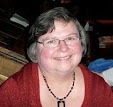Selected for the September Gables Book Club, The Engineer'sWife is an historical novel based on the life of Emily Warren Roebiling, wife of the chief engineer of the Brooklyn Bridge, Washington Roebling. She has been looked over by historians for her contribution to the construction of the bridge, a definite engineering feat.
The novel begins during the Civil War when Emily's brother introduces her to Washington and the two begin a long distance relationship until the end of the conflict. They seem madly in love and write, even if it is sporadically to each other.
After their marriage in January, 1865 they, according to the book, moved to Cincinnati while Washington's father was working on the bridge across the Ohio to Covington, Kentucky. She showed her spunk by visiting the job site and taking food to the workers, but also learning about the bridge construction.
They travel to Europe while Emily is pregnant in order to study the use of caissons in bridge construction. While there she delivers their only child, a son, John. Her delivery was complicated and resulted in the outcome of never being able to carry a baby again. The couple return to the United States and Washington, with his father, commence the building of the bridge. After a freak accident with a ferry, his father dies from a tetanus infection. Washington carries on the project until he developed decompression sickness, otherwise known as caisson disease. From that point on he became a virtual recluse. It was then that Emily took over the supervision of the bridge construction with a bit of Washington's guidance and a lot of studying from the books in his library. Her work came to fruition in 1883 when the bridge was dedicated.
Throughout the book other characters are introduced, including some of Emily's family, the bridge workers and P.T. Barnum. It is this interaction that caused some consternation. In the afterword, Wood declares that relationship was fictional. Perhaps that statement should come in a foreword instead of the afterword. When an historical fiction author takes that much liberty, it becomes impossible to separate fact from fiction in other areas of the book.
The building of the bridge and Emily's role in it are documented and were the interesting parts of the book. Insights into the social and cultural styles of the times are also fascinating. Overall, I just wished the novel was less sensationalized and over-dramatized and I could have spent more time enjoying it rather than fact-checking.


